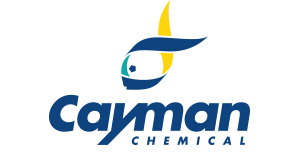THUNDER™ Phospho-MEK1 (S218/S222) + Total MEK1 TR-FRET Cell Signaling Assay Kit
THUNDER™ Phospho-MEK1 (S218/S222) + Total MEK1 TR-FRET Cell Signaling Assay Kit
SKU
CAY500261
Packaging Unit
480 wells
Manufacturer
Cayman Chemical
Availability:
loading...
Price is loading...
Formula Weight: 0
Shelf life (days): 180
Notes: The Phospho-MEK1 (S218/S222) + Total MEK1 assay kit is a homogeneous time-resolved Förster resonance energy transfer (TRFRET) sandwich immunoassay. The THUNDER™ Cell Signaling assay workflow consists of 3 steps. Following cell treatment, cells are first lysed with the specific Lysis Buffer provided in the kit. Then Phospho-MEK1 (S218/S222) and Total MEK1 in the cell lysates are detected in separate wells with two pairs of fluorophore-labeled antibodies in a simple "add-incubatemeasure" format (single-step reagent addition; no wash steps). For detection of the phosphorylated protein, one antibody is labeled with a donor fluorophore (Europium chelate; Eu-Ab1) and the second with a far-red acceptor fluorophore (FR-Ab2). The same approach is used for the second antibody pair detecting the total protein (Eu-Ab3 and FR-Ab4). The binding of the two matched labeled antibodies to distinct epitopes on the target protein (either phospho-MEK1 or total MEK1) takes place in solution and brings the two dyes into close proximity. Excitation of the donor Europium chelate molecules with a flash lamp (320 or 340 nm) or a laser (337 nm) triggers a FRET from the donor to the acceptor molecules, which in turn emit a TR-FRET signal at 665 nm. Residual energy from the Eu chelate generates light at 615 nm. The signal at 665 nm is proportional to the concentration of Phospho-MEK1 (S218/S222) and Total MEK1 in the cell lysate. Data can be expressed as either the signal at 665 nm or the 665 nm/615 nm ratio
Shelf life (days): 180
Notes: The Phospho-MEK1 (S218/S222) + Total MEK1 assay kit is a homogeneous time-resolved Förster resonance energy transfer (TRFRET) sandwich immunoassay. The THUNDER™ Cell Signaling assay workflow consists of 3 steps. Following cell treatment, cells are first lysed with the specific Lysis Buffer provided in the kit. Then Phospho-MEK1 (S218/S222) and Total MEK1 in the cell lysates are detected in separate wells with two pairs of fluorophore-labeled antibodies in a simple "add-incubatemeasure" format (single-step reagent addition; no wash steps). For detection of the phosphorylated protein, one antibody is labeled with a donor fluorophore (Europium chelate; Eu-Ab1) and the second with a far-red acceptor fluorophore (FR-Ab2). The same approach is used for the second antibody pair detecting the total protein (Eu-Ab3 and FR-Ab4). The binding of the two matched labeled antibodies to distinct epitopes on the target protein (either phospho-MEK1 or total MEK1) takes place in solution and brings the two dyes into close proximity. Excitation of the donor Europium chelate molecules with a flash lamp (320 or 340 nm) or a laser (337 nm) triggers a FRET from the donor to the acceptor molecules, which in turn emit a TR-FRET signal at 665 nm. Residual energy from the Eu chelate generates light at 615 nm. The signal at 665 nm is proportional to the concentration of Phospho-MEK1 (S218/S222) and Total MEK1 in the cell lysate. Data can be expressed as either the signal at 665 nm or the 665 nm/615 nm ratio
| SKU | CAY500261 |
|---|---|
| Manufacturer | Cayman Chemical |
| Manufacturer SKU | 500261-480 |
| Package Unit | 480 wells |
| Quantity Unit | PAK |
| Application | TR-FRET Assay, High-Throughput Screening |
| Product information (PDF) | Download |
| MSDS (PDF) |
|

 Deutsch
Deutsch





